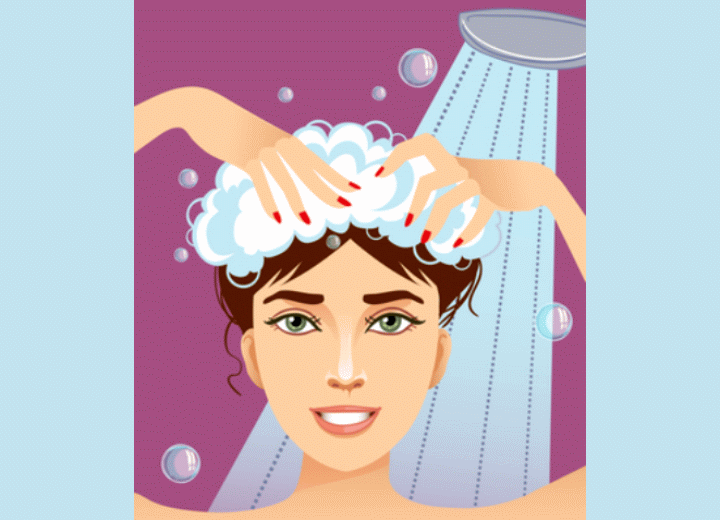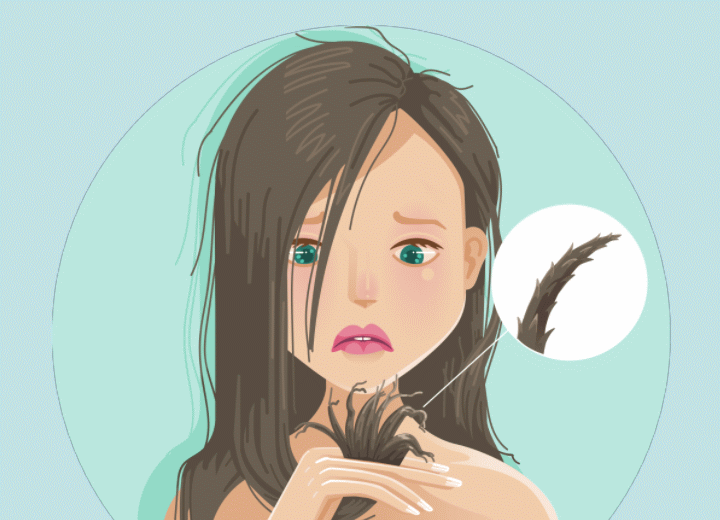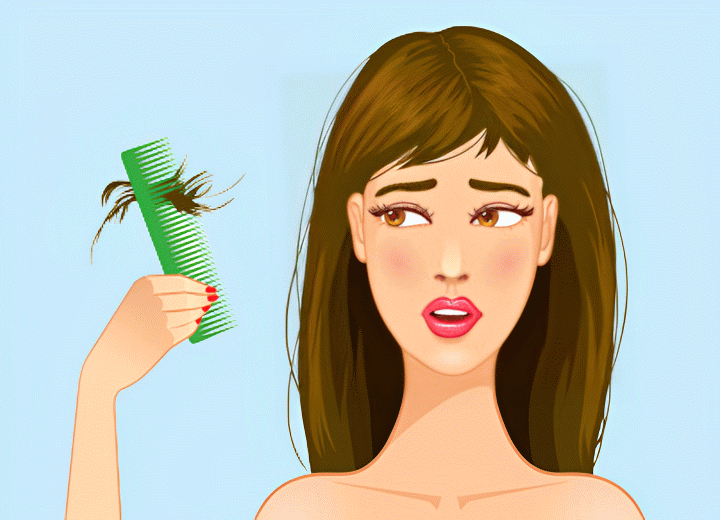How To Wash Your Hair (2)

Previous page
After systematically cleaning the scalp, it's time to rinse away all the accumulated dirt. Start rinsing with cool water, beginning from the bangs area, and work the water down the hair shaft by gently tapping the hair a few times to ensure all the soap is thoroughly rinsed out.
When applying conditioner, you can completely skip the root area. Conditioner should only be applied to the hair shaft and ends. Start applying from top to bottom and let the conditioner work its magic while you leave it in for a few minutes, allowing you to continue washing the rest of your body.
Now that we have covered how to properly wash our hair, let's discuss the mistakes that can easily occur when performing such a seemingly innocent task.
Using Too Much Shampoo
Hair experts agree that a quarter-sized amount of shampoo is sufficient for shoulder-length hair. Adjust the amount accordingly for your own hair length. Using excessive shampoo can hinder the cleansing process by preventing it from being properly worked into the hair.
Concentrating and Applying Shampoo to the Same Spot
A common mistake is consistently applying shampoo to the same spots each time we wash our hair, such as the crown or bangs area, and then working up the suds from that spot. However, this can lead to inflammation, tenderness, and overall irritation in that particular area of the scalp. Concentrating shampoo in the same areas repeatedly can also result in dryness and flakiness of the scalp.
Experts recommend varying the areas of the scalp where you initially apply the shampoo. This common mistake arises from following a routine and can easily be avoided by following the step-by-step instructions for applying shampoo using your fingertips, as mentioned in the first section of this article.
Squeezing/Twisting to Remove Excess Water
Before stepping out of the shower with wet hair, our instinct is often to twist and squeeze out the extra water and let it drain. While removing excess water is fine, squeezing too forcefully and twisting wet hair can cause breakage, not only at the ends but also in various spots along the hair shaft.
To remove excess water, gently run your hands from the top to the ends a few times, rather than applying excessive force in a single motion.

Towel Damage
Similarly, vigorously rubbing hair with a towel can lead to breakage. Once you have removed the excess water, blot the hair gently with a towel instead of rubbing it. Towels can damage your hair. As mentioned earlier in this article, hair is most fragile when it's wet.
Rubbing the hair with a towel creates friction that can harm the cuticle, making the hair more susceptible to damage and resulting in an unwanted wiry or frizzy appearance. Investing in an extra absorbent towel may be worthwhile, particularly if you have particularly dense hair.
Brushing While Wet
Whether the hair is dry or damp, it's important to avoid using a fine-toothed comb altogether. Have we emphasized enough that wet hair is more vulnerable to damage? One of the key takeaways from this article is to handle wet hair with great care.
One of the best practices for your hair is to wait until it's dry before brushing (when it's in a stronger state). However, if you must brush it while wet, it's better to use a wide-toothed comb or even finger brushing instead of a fine-toothed comb.

Washing Hair As Soon As It Gets Oily
As mentioned earlier, washing your hair removes the natural oils, and then the scalp's oil production, known as sebum, kicks into gear again. But did you know that you can actually train your hair to become less oily over time?
Yes, you read that correctly. By extending the time between regular scalp shampooing by one additional day, the production of sebum slows down. The scalp adjusts its sebum production based on how frequently you wash your hair. By washing it less frequently, you train your scalp and hair to require less frequent washing.
Not Saturating Hair Prior to Washing
As mentioned in the steps for properly washing your hair, thorough and complete saturation is essential for achieving the best results. Neglecting this crucial step in the hair washing routine can result in an ineffective cleanse, as the shampoo and water are meant to work together.
The water is just as important as the shampoo itself. Don't worry, in the grand scheme of things, this is a minor oversight and can easily be rectified by fully immersing the hair in water for 3 minutes before lathering up.
Using Silicone-Centered Shampoos
Initially, shampoos containing dimethicone (silicone) can make your hair feel sleek and smooth. However, over time, they create a waxy buildup on the hair shaft, which ends up dehydrating the hair by preventing the absorption of nutrients.
Nobody wants to compromise the health of their hair. Factors like environmental conditions (sun, surf, wind, excessive water), chemical treatments (coloring, highlighting), and physical stress (curling irons, flat irons) can cause damage. It's crucial to identify the aspects we have control over, such as choosing the right shampoo for our specific hair type and needs, and treating wet hair with gentleness, in order to minimize hair damage.
Unlike the skin, hair doesn't have nerve connections, so it can't signal pain when it's damaged. However, it's important to understand that hair is a complex system, similar to the skin. It consists of multiple layers that can be disrupted by environmental, chemical, or physical damage.
While we acknowledge that it's nearly impossible to avoid all types of hair damage, fortunately, there are simple techniques and approaches within the shampooing process that can help minimize damage and keep our hair in excellent condition. This means we don't have to give up other beloved hair practices, such as using our favorite hair colors, getting seasonal highlights, or styling with curling irons. So, take our valuable advice and put it into practice!
©Hairfinder.com